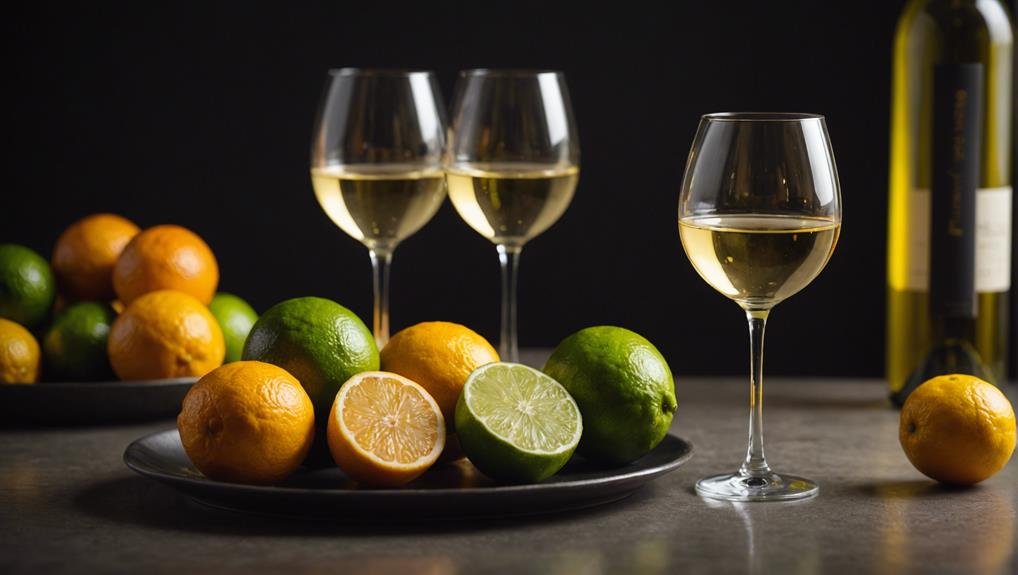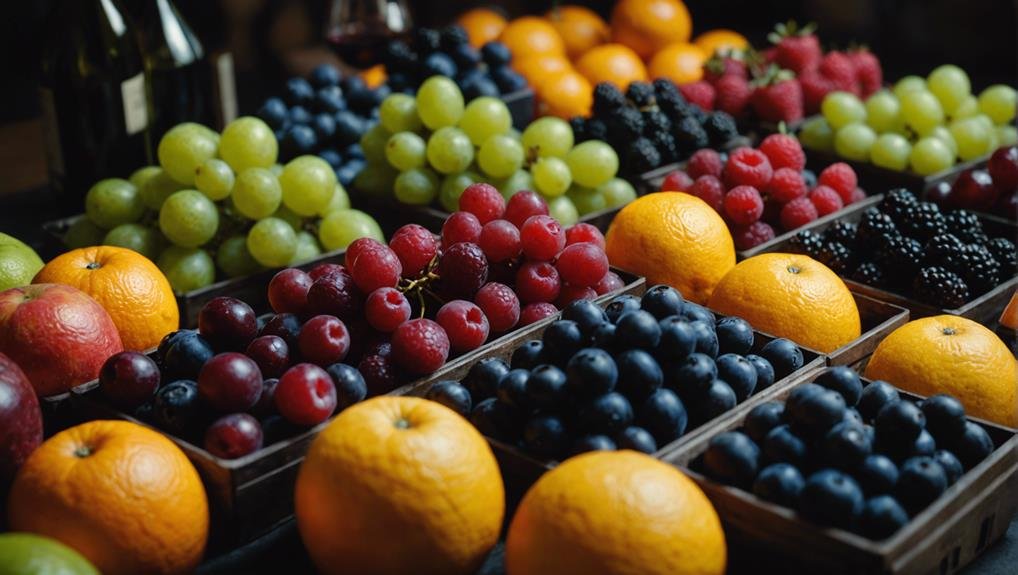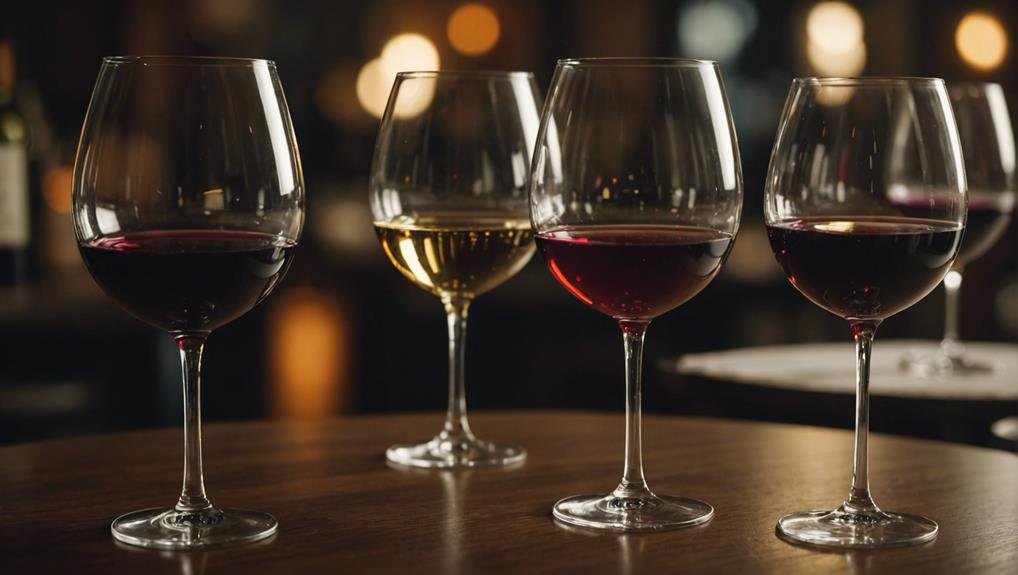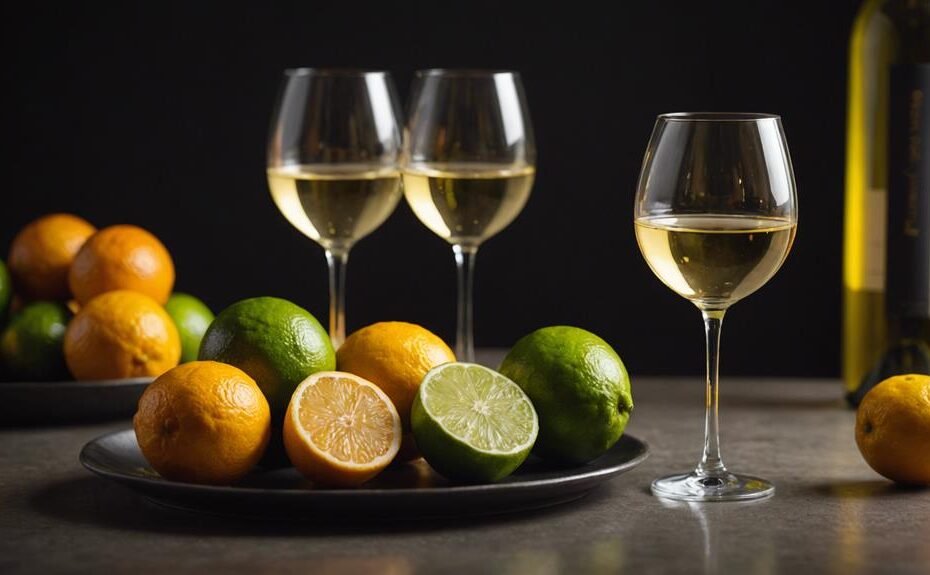Embarking on a journey into the fascinating world of wine is like unraveling a captivating mystery. With each sip, terms like acidity, texture, fruit flavors, aromas, and tannins paint a vivid picture of what’s in the glass.
Every taste holds hidden depths, waiting to be discovered, giving us a glimpse into the intricate layers that shape our wine experiences. Understanding these nuances not only enriches our enjoyment but also deepens our connection with the wines we love.
Join us as we explore the realm of wine terminology, where each term acts as a key to unlocking the mysteries hidden within every glass.
Understanding Wine Acidity

Understanding the role of acidity in wines is crucial for wine enthusiasts. Acidity greatly influences the taste and sensation of a wine, with high acidity wines offering a tart and lively experience on the palate. Red wines often showcase tart fruit flavors, while white wines are likened to the acidity of lemon or lime juice.
Recognizing acidity levels can help in identifying the sharpness and brightness of a wine, adding to its complexity and balance. Whether you enjoy a crisp white wine or a vibrant red with a zesty kick, appreciating acidity is key to fully savoring the diverse world of wines.
Exploring Wine Texture
Understanding wine acidity sets the stage for exploring wine texture, which adds a new layer to the sensory experience of wines. Wine texture refers to how a wine feels in your mouth, including aspects like smoothness, weight, and astringency.
Terms like velvety, silky, grippy, or chewy are commonly used to describe wine texture. Velvety textures indicate a luxurious and smooth mouthfeel, while grippy or chewy textures suggest a wine with strong tannins that leave your mouth feeling dry. The weight of a wine can vary from light-bodied to full-bodied, influencing the overall richness and mouthfeel.
Deciphering Fruit Characteristics

Understanding the subtle fruit flavors in wines adds depth to your enjoyment and comprehension of their taste profiles.
- Berry Tones: Notice the delicate hints of strawberries, raspberries, or blackberries.
- Citrus Zest: Experience the refreshing tang of lemon, lime, or grapefruit.
- Stone Fruit: Delight in the juicy flavors of peaches, apricots, or plums.
Recognizing these fruity characteristics unveils the underlying taste notes in the wine, enabling you to identify and describe the different fruity nuances present. Whether you savor the sweetness of berries, the zing of citrus, or the succulence of stone fruits, being aware of these elements enriches your exploration and analysis of diverse wines.
Unveiling Wine Aromas
When you take a moment to smell a glass of wine, you embark on a sensory adventure that reveals its intricate aromas. These scents offer a glimpse into the wine’s complexity, with hints of fruits, flowers, spices, and earthy notes waiting to be discovered.
Depending on the grape type, winemaking methods, and aging process, aromas can vary widely. You might pick up fruity notes like berries or citrus, floral hints such as jasmine or rose, spicy aromas like cinnamon or pepper, or herbal scents like mint or thyme. These aromas can trigger memories, set the stage for the taste experience, and enhance your overall enjoyment of the wine.
Delving Into Tannins

When it comes to wine aromas, understanding tannins is key to enhancing your tasting experience. Tannins are compounds naturally present in grape skins, seeds, and stems. They impart a dry sensation in your mouth, akin to the feeling of black tea. Red wines, especially those aged in oak barrels, tend to have more pronounced tannins.
These compounds are crucial for wine, influencing its structure, aging potential, and overall mouthfeel. By grasping the role of tannins, you can better appreciate the diversity of wine styles and effectively pair them with complementary dishes. Tannins truly shape the character of a wine and contribute significantly to its complexity and texture.
Frequently Asked Questions
What Does It Mean When a Wine Is Described as “Barnyard”?
When a wine is described as ‘barnyard,’ it means it has an aroma similar to farm animal scents, often not appealing to most people. This term is usually not preferred as it suggests that the wine has unpleasant and unattractive smells.
How Can One Tell if a Wine Is Considered “Big”?
Identifying a ‘big’ wine involves savoring a rich, full-bodied flavor that completely fills the palate. These wines typically feature strong fruit aromas, bold tannins, and a lingering finish, delivering a robust and unforgettable tasting experience.
What Characteristics Define a Wine as “Buttery”?
When a wine is described as ‘buttery,’ it means it has a smooth, rich quality often achieved through oak aging. This characteristic is known for its creamy texture and low acidity, making it a favorite among wine enthusiasts for its distinct taste.
What Is the Significance of a Wine Being Labeled as “Cigar Box”?
Describing a wine as having ‘cigar box’ notes points to its flavors of sweet cedar-wood and smoke. This suggests that the wine is appealing to enthusiasts, inviting them to savor it slowly and enjoy its intricate and layered taste profile.
How Can You Identify a Wine That Is Described as “Earthy”?
When looking for an ‘earthy’ wine, search for green and rustic notes that offer a unique, natural finish. These wines may showcase characteristics that remind you of soil or foliage, highlighting their distinctive and sometimes complex flavor profile.
Conclusion
Understanding the language of wine can deepen our enjoyment of this complex and flavorful beverage.
Just like a skilled musician blends different notes to create a harmonious melody, a well-crafted wine combines acidity, texture, fruit notes, aromas, and tannins to produce a symphony of flavors on our taste buds.
Decoding wine terminology opens up a world of sensory pleasures and endless pairing opportunities.
Here’s to exploring the rich and nuanced language of wine! Cheers!
